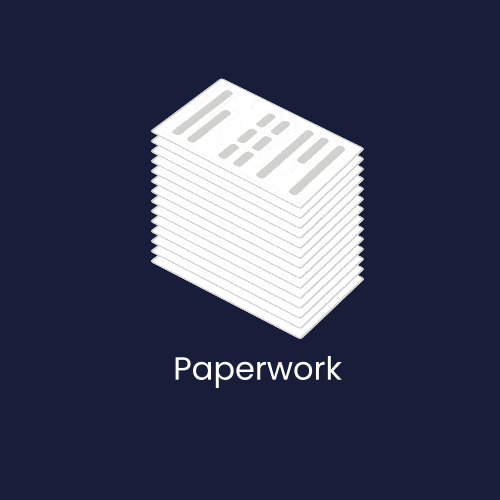Often the most difficult and crucial part of logistics management is the last mile. It is the point of convergence between accuracy, efficiency, and client happiness. Businesses are increasingly relying on Last Mile Transportation Management Systems (TMS) to help them traverse this challenging stage successfully. This article explores the importance of Last Mile TMS, as well as its main features, advantages, and ways to improve customer experience.
What is Last Mile TMS?
Get your goods from the distribution center to the customer’s door with the help of Last Mile TMS, a specialist software solution made to simplify and optimize the last leg of the delivery process. It focuses on the particular difficulties and complexities of last-mile delivery, going beyond the scope of conventional TMS systems.
Benefits of Last Mile TMS
Here’s how Last Mile TMS empowers logistics companies:
Enhanced Route Optimization:
Reduce fuel expenses and increase delivery times by optimizing delivery routes depending on driver availability, package weight, and size.
Improved Efficiency:
By automating processes like driver dispatch, route planning, and proof of delivery, you may free up important resources for other uses.
Real-Time Visibility:
Real-time delivery tracking builds transparency and confidence by giving clients precise delivery windows.
Dynamic Delivery Management:
Respond quickly to unforeseen delays or last-minute modifications from customers to guarantee a seamless delivery experience.
Cost Reduction:
Optimize routes, minimize fuel consumption, and streamline operations, leading to significant cost savings.
Data-Driven Decisions:
Make well-informed strategic decisions by utilizing data analytics to uncover opportunities for development, obtain insights into delivery performance.
Explore how nuVizz’s Last Mile TMS for Shippers can revolutionize your delivery operations, ensuring efficiency and customer satisfaction. Learn more about their cutting-edge solutions here.
Key Features of Last Mile TMS
Last Mile TMS offers a robust set of features specifically tailored for the final delivery leg:
Multi-Stop Route Planning:
Consider traffic patterns, different delivery locations, and driver breaks while planning effective routes.
Delivery Tracking and Visibility:
Providing consumers with precise delivery windows, track driver position and delivery status in real-time.
Mobile Apps for Drivers:
Give drivers smartphone apps for tracking routes, scanning packages, and capturing proof of delivery.
Electronic Proof of Delivery (ePOD):
Take digital signatures or pictures to prove delivery, to simplify record-keeping and ensure accountability.
Customer Communication Tools:
Allow drivers and customers to communicate back and forth on updates on deliveries and scheduling changes.
How Last Mile TMS Improves Customer Experience
By implementing Last Mile TMS, logistics companies can significantly enhance the customer experience:
Faster Deliveries:
Faster deliveries that live up to consumer expectations are the result of optimized routes and real-time tracking.
Increased Transparency:
Customers gain confidence and trust by being able to track their products in real-time and get reliable delivery updates.
Flexibility and Control:
Customers are given control by some systems that let them select preferred delivery windows or reschedule deliveries.
Reduced Delivery Errors:
Better tracking and route planning reduce delays and missing deliveries, improving the customer experience.
Discover how nuVizz’s Last Mile TMS for Carriers optimizes your delivery processes, enhancing efficiency and performance. Find out more about their innovative solutions here.
Choosing the Right Last Mile TMS Solution
Selecting the best Last Mile TMS solution for your company is essential, as there are several options available. Here are some crucial things to remember:
Company Size and Needs:
Choose a delivery option that can grow with your company and meets your unique requirements (such as temperature-controlled deliveries).
Integration Capabilities:
Make sure the TMS works flawlessly with the other logistics software and your current warehouse management system (WMS).
Ease of Use:
Select a system that is easy to use and has interfaces that are clear to dispatchers and drivers alike.
Scalability and Flexibility:
Select a system that can change to meet your evolving delivery needs and grow with your business.
Cost and Budget:
Consider the upfront cost and ongoing subscription fees within your budget constraints.
About nuVizz Last Mile TMS
nuVizz is a leading provider of innovative logistics and transportation management solutions, including Last Mile TMS. With a focus on technology-driven optimization, nuVizz empowers businesses to streamline their operations, improve efficiency, and enhance customer satisfaction. Leveraging advanced algorithms and real-time analytics, nuVizz’s Last Mile TMS solution enables businesses to conquer the complexities of last-mile delivery with ease.
Conclusion:
Last Mile TMS is a strategic investment in the future of your logistics operations, not just a software program. You may differentiate yourself from the competition by delivering a superior client experience, increasing efficiency, and saving a considerable amount of money by utilizing its robust features.

